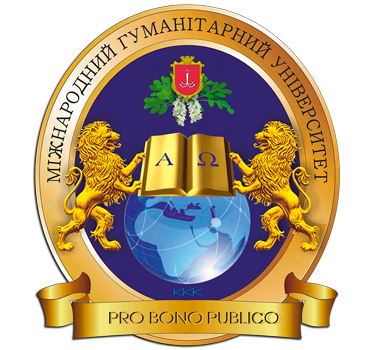INFLUENCE OF PNEUMOPERITONEUM DURING BARIATRIC INTERVENTION BY LAPAROSCOPIC SLEEVE RESECTION OF THE STOMACH ON THE HEMOCOAGULATION SYSTEM IN PATIENTS WITH MORBID OBESITY
DOI:
https://doi.org/10.31379/2411.2616.15.1.7Keywords:
bariatrics, pneumoperitoneum, hemostasis.Abstract
Background. Bariatric surgery is well known for obese patients treatment due to it benefits. Postoperative venous thromboembolism (VTE) is less common in this cohort. The aim of this study is to compare LPTEG data received in intraoperative settings from bariatric surgery patients with different pneumoperitoneum sets. Materials and methods. Patients aged 25-75 y.o. with BMI ≥35, who underwent laparoscopic bariatric surgery (n=68) were divided on two groups: group 1 (n=43) underwent bariatric surgery with standard pneumoperitoneum pressure presets (12-15mmHg); group 2 (n=25) underwent bariatric surgery with higher than standard pneumoperitoneum pressure presets (≥16mmHg) due to visualization problems. Mean duration of surgical intervention was 60-80 min; duration of pneumoperitoneum was 45-60 min. LPTEG data were collected on 30 minute of surgical procedure. Results. Blood coagulation constants checked by LPTEG were: Intensity of contact coagulation (ICC), Intensity of coagulation drive (ICD), clot maximum density (MA) and fibrinolytic activity – Index of retraction and clot lysis (IRCL). We received slight increase of all measurements in group 1: ICC by 23,57 %, ICD by 34.57 %, MA by 74,52%, IRCL by 91,18 % above the norm; in group 2 – significant increase in all the measurements: ICC by 38.71 %, ICD by 69.03 %, MA by 98.93 %, IRCL by 118.73 % above the norm. Conclusion. Higher pneumoperitoneum pressure presets significantly affecting LPTEG data in comparison to standard in intraoperative setting; this may increase intra- and postoperative VTE risk. Further studies are needed to create a VTE prevention roadmap for cases, when high intraperitoneal pressure required.
References
World health statistics. – 2012. – стр. 34-37
Flegal K.M. Prevalence and trends in obesity among US adults, 1999–2008 / K.M. Flegal, M.D. Carroll, C.L.Ogden, L.R.Curtin // JAMA. – 2010. – Vol. 303. – P. 235–241.
Огиенко В. П. Статистические данные по распространению ожирения в Украине и мире в целом [Электронный ресурс]. / В. П. Огиенко – Режим доступа:http://medstat.gov.ua/ukr.
Мировая статистика здравоохранения 2014 г / Всемирная организация здравоохранения. – Женева. – 2014. – С. 21–24.
Faber D.R. Role of adipose tissue in haemostasis, coagulation and fibrinolysis / D.R. Faber, P.G. de Groot, F.L.Visseren // Obes Rev. – 2009. – Vol. 10. – P. 554–563.
С. И. Воротынцев, О. А. Тарабрин. Влияние эпидуральной аналгезии на гемостатический потенциал после абдоминальных операций у пациентов с ожирением. / С. И. Воротынцев, О. А. Тарабрин . // Клінічна анестезіологія та інтенсивна терапія. – 2018
р. – № 1 (11). – С. 5-13.
Napoleone E., Dis A., Amore C. Leptin induces tissue factor expression in human peripheral blood mononuclear cells: a possible link between obesity and cardiovascular risk? J Thromb Haemost. 2007;5:1462–1468.
Buchwald H, Avidor Y, Braunwald E, Jensen MD, Pories W, Fahrbach K, et al. Bariatric surgery: a systematic review and meta-analysis. JAMA. 2004 Oct 13; 292(14):1724–37. Erratum in: JAMA 2005 Apr 13, 293, 14, 1728. [PubMed: 15479938]
David A. Froehling, MD. Incidence of Venous Thromboembolism After Bariatric Surgery:A Population-Based Cohort Study. / David A. Froehling, MD, Paul R. Daniels, MD, Karen F. Mauck, MD, Maria L. Collazo-Clavell, MD, Aneel A. Ashrani, MD, Michael G. Sarr, MD, Tanya M. Petterson, Kent R. Bailey, PhD. // NIH Public Access. Obes Surg. Author manuscript; available in PMC. – 2014, February 14. – Р. 1-5.
Flum DR, Belle SH. Longitudinal Assessment of Bariatric Surgery (LABS) Consortium. Perioperative safety in the longitudinal assessment of bariatric surgery. / Flum DR, Belle SH, King WC, Wahed AS, Berk P, Chapman W, et al. // N Engl J Med. – 2009 Jul 30. – 361(5):445–54. [PubMed: 19641201].
Lancaster RT, Hutter MM. Bands and bypasses: 30-day morbidity and mortality of bariatric surgical procedures as assessed by prospective, multi-center, risk-adjusted ACS-NSQIP data. / Lancaster RT, Hutter MM. // Surg Endosc. – 2008 Dec; 22(12):2554–63. – Epub 2008 Sep 20. [PubMed: 18806945].
Winegar DA. Venous thromboembolism after bariatric surgery performed by Bariatric Surgery Center of Excellence Participants: analysis of the Bariatric Outcomes Longitudinal Database. / Winegar DA, Sherif B, Pate V, DeMaria EJ. // Surg Obes Relat Dis. – 2011 Mar-Apr. – 7(2):181–8. Epub 2010 Dec 29. [PubMed: 21421182].
Melinek J. Autopsy findings following gastric bypass surgery for morbid obesity. / Livingston E, Cortina G, Fishbein MC. // Arch Pathol Lab Med. – 2002 Sep. – 126(9):1091–5
Spyropoulos A.C. Emerging strategies in the prevention of venous thromboembolism in hospitalized medical patients. Chest. 2005; 128:958-969.
Eleni Zachari, Eleni Sioka. Venous Thromboembolism in Bariatric Surgery. / Eleni Zachari, Eleni Sioka, George Tzovaras and Dimitris Zacharoulis //Dr. Ufuk Çobanoğlu (Ed.). – 2012. – ISBN: 978-953-51-0233-5.
О.О. Тарабрін, І.І. Тютрін. Низькочастотна п’езотромбоєластографія цільної крові (алгоритми діагностики та корекції гемостатичних розладів). / О.О. Тарабрін, І.І. Тютрін, В.В. Удут, П.О. Тарабрін // м. Одеса – 2018р.
Tarabrin O., Shcherbakov S., Gavrychenko D., Saleh O., Lyoshenko I., Kushnir O. Can we use the low-frequency piezoelectric tromboelastography for diagnosis coagulation disorders? European Journal of Anaesthesiology 2013; 30: 92.
Lindgren L, Koivusalo AM, Kellokumpu I. Conventional pneumoperitoneum compared with abdominal wall lift for laparoscopic cholecystectomy / Lindgren L, Koivusalo AM, Kellokumpu I. // Br J Anaesth. 1995;75:567–572.
Nguyen NT, Lee SL, Anderson JT, et al. Evaluation of intraabdominal pressure after open and laparoscopic gastric bypass. Obes Surg. 2001;11:40–45
Nguyen NT, Ho HS, Fleming NW, et al. Cardiac function during laparoscopic vs open gastric bypass: a randomized comparison. Surg Endosc. 2002;16:78–83.
Fried M, Krska Z, Danzig V. Does the laparoscopic approach significantly affect cardiac functions in laparoscopic surgery? Pilot study in non-obese and morbidly obese patients. Obes Surg. 2001;11:293–296.
Dexter SP, Vucevic M, Gibson J, et al. Hemodynamic consequences of high- and low-pressure capnoperitoneum during laparoscopic cholecystectomy. Surg Endosc. 1999;13:376–381.
Meininger D, Byhahn C, Bueck M, et al. Effects of prolonged pneumoperitoneum on hemodynamics and acid-base balance during totally endoscopic robot-assisted radical prostatectomies. World J Surg. 2002;26:1423–1427.
Millard JA, Hill BB, Cook PS, et al. Intermittent sequential pneumatic compression in prevention of venous stasis associated with pneumoperitoneum during laparoscopic cholecystectomy. Arch Surg. 1993;128:914–919.
Ido K, Suzuki T, Kimura K, et al. Lower-extremity venous stasis during laparoscopic cholecystectomy as assessed using color Doppler ultrasound. Surg Endosc. 1995;9:310–313
Nguyen NT, Cronan M, Braley S, et al. Duplex ultrasound assessment of femoral venous flow during laparoscopic and open gastric bypass. Surg Endosc. 2003;17:285–290.
Яшков Ю.И., Луцевич О.Э., Бордан Н.С., Ивлева О.В. Эффективность лапароскопической продольной резекции желудка у больных с ожирением. Ожирение и метаболизм. 2015;12:1:20-28. [Yashkov YuI, Lutsevich OE, Bordan NS, Ivleva OV. Efektivnost’
laparoskopicheskoi prodol’noi rezektsii zheludka u bol’nykh s ozhireniem. Ozhirenie i metabolizm. 2015; 12:1:20-28. (In Russ.)].





